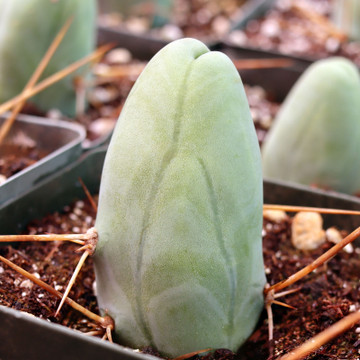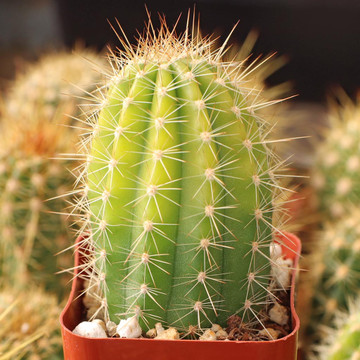Echinopsis
Echinopsis (Ech-i-nop-sis) is a very large genus of cacti, featuring over 100 separate species. Each of these can have many subspecies and forms, meaning you'll find the cactus you're looking for here. You just may need to spend a lot of time looking!
APPEARANCE
- Form: Too variable to define. Some are tiny button-like cacti while others are giant and tree like. Traditionally, collectors have broken this genus up into two genera, Lobivia and Trichocereus, with Lobivia covering the smaller plants and Trichocereus covering the larger ones.
- Colors: Despite the variation in form, nearly all Echinopsis cacti are some shade of green. A few notable exceptions (i.e. Echinopsis pachanoi) are more blue in color.
- Foliage: Without exception all foliage is organized into spines. No Echinopsis plants have photosynthetic leaves.
- Flowers: They all have fairly large, showy flowers of varying color. Some flower prolifically to form a beautiful carpet or mound of petals.
CARE
- Light: They like full sun which encourages the plant to form spines and flowers.
- Soil: Pick a gritty, well-draining mix like a cactus and succulent soil (available at garden centers) or mix your own (more info).
- Water: Water deeply enough for water to run out the container’s drainage hole. Allow soil to completely dry before watering again. Keep dry in winter.
- Hardiness: Echinopsis are not frost hardy and should be brought indoors to a sunny window sill if there is a chance of frost. (What’s my zone?)
- Propagation: The plants that branch or offset can be easily propagated from stem cuttings but they can be grown from seeds as well.
NOTES FROM THE NURSERY
This is a very popular genus of cacti, and it has been for a long time. Not only have collectors valued these plants, due to their showy blooms and tough nature, but the ancient peoples of meso-america also valued these plants. The fruit is sweet either freshly eaten or preserved as a jam and a few plants feature hallucinigenic alkaloids that shaman used in religious practices.
Due to its popularity, many hybrids have been created and selected for prolific growth or showy flowers. Some variegated varieties can be found grafted to Hylocereus plants to aid in their photosynthesis. If you wanted to, you could dedicate your whole growing space to species and cultivars of this genus alone and still not cover even half of what exists.
READ MORE





